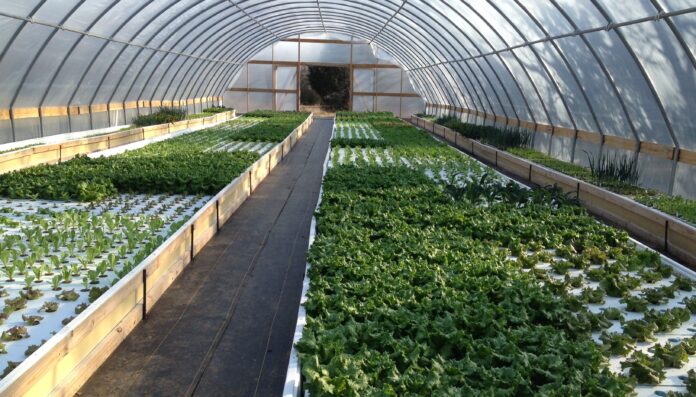Aquaponics is a sustainable and innovative way of growing plants and fish together in a closed-loop system. It involves using the waste produced by fish as a natural fertilizer for plants. Which in turn, purifies the water for the fish. While traditionally, aquaponics has been practiced in outdoor systems, indoor aquaponics has become increasingly popular. Primarily due to its year-round growing capabilities, and the ability to control growing conditions. In this article, we will explore the benefits of indoor aquaponics. Plus we will see how to set up your system, and tips for success.
Understanding Indoor Aquaponics
Indoor aquaponics is similar to traditional aquaponics, but with one significant difference; it is done indoors. This makes it ideal for people living in urban areas with limited outdoor space. The system consists of a fish tank, a grow bed, and a pump that circulates water from the fish tank to the grow bed. The plants in the grow bed absorb the nutrients from the fish waste and purify the water. Which is then recirculated back to the fish tank. This closed-loop system is incredibly sustainable, as it requires very little water and no harmful chemicals or fertilizers.
Advantages of Indoor Aquaponics
One of the most significant advantages of indoor aquaponics is that it allows for year-round growing. It is also completely independent of the climate and season. You can grow a wide variety of vegetables, fruits, and herbs all year round. And that too without the need for soil or pesticides. Additionally, indoor aquaponics provides you with complete control over the growing conditions, including light, temperature, and humidity levels. By optimizing those we can help optimize plant growth.
Indoor aquaponics is also highly sustainable, as it uses up to 90% less water than traditional agriculture. And on top of that, it does not produce any harmful chemical runoff. Moreover, it is space-efficient, making it an excellent option for small apartments or homes with limited outdoor space.
Setting Up Your Indoor Aquaponics System
To set up your indoor aquaponics system, you will need to select the right space, choose the fish and plants, and gather the necessary equipment and materials. The ideal space for an indoor aquaponics system is a room with a couple of different characteristics. Such as plenty of natural light, a stable temperature, and good ventilation. You will also need to select fish and plants that are well-suited for the conditions in your area. As well as the size of your system.
The equipment and materials needed for an indoor aquaponics system include a fish tank, a grow bed, a water pump, tubing, and grow lights. The step-by-step process for setting up your system involves filling the fish tank with water, adding fish, adding grow bed media, and planting your plants.
Tips for Success
To ensure the success of your indoor aquaponics system, it is crucial to monitor and adjust a few things. Such as pH levels, maintaining water quality, providing proper lighting, and harvesting and replanting your plants regularly. Monitoring the pH levels of your water is crucial as it can impact the health of your fish and plants. It is also important to maintain water quality by testing for ammonia, nitrite, and nitrate levels regularly. Providing your plants with proper lighting is essential for healthy growth and is achieved through natural light or grow lights.
Common Challenges and Solutions
While indoor aquaponics is a relatively straightforward system, there are some common challenges that you may encounter. Algae overgrowth, fish health issues, and plant nutrient deficiencies are all common problems. However, with regular monitoring and troubleshooting, you can prevent or fix these issues quickly.
Conclusion
Indoor aquaponics is an innovative and sustainable way of growing your own food all year round, regardless of where you live. By providing complete control over growing conditions, year-round growing capabilities, and space efficiency, indoor aquaponics is an ideal option for anyone interested in sustainable agriculture. Setting up your own system may seem daunting, but with the right space, fish and plant selection, and equipment and materials, anyone can successfully grow their own food using this method. Remember to monitor pH levels, maintain water quality, provide proper lighting, and troubleshoot any issues that may arise. With these tips and strategies, you’ll be on your way to growing healthy, sustainable food in no time.
As always folks be sure to check out the Global Growth Forum and read some of the similar latest articles. Also, if you wanna read some of the latest articles in Hindi be sure to check out the Mojo Patrakar.



